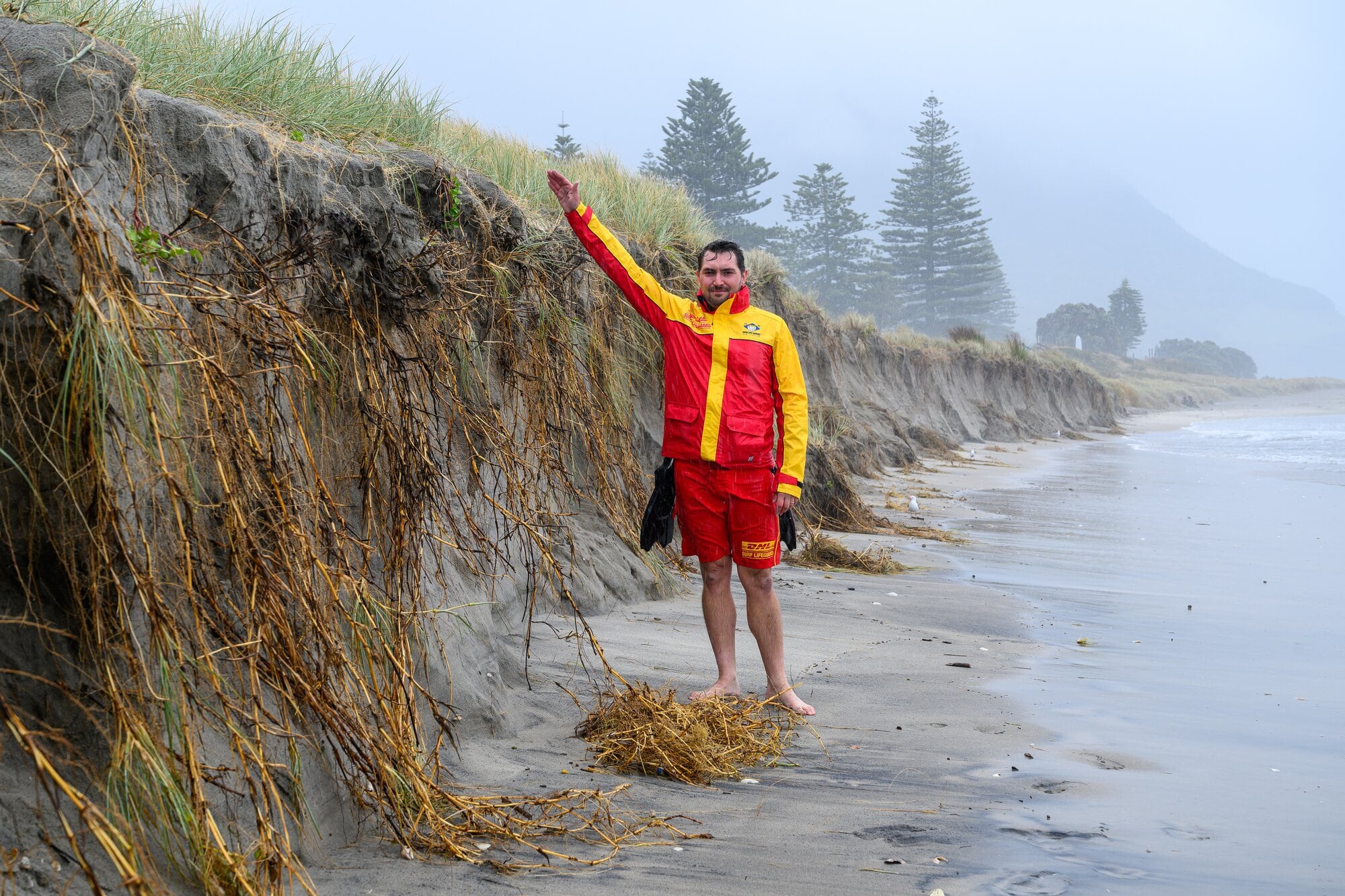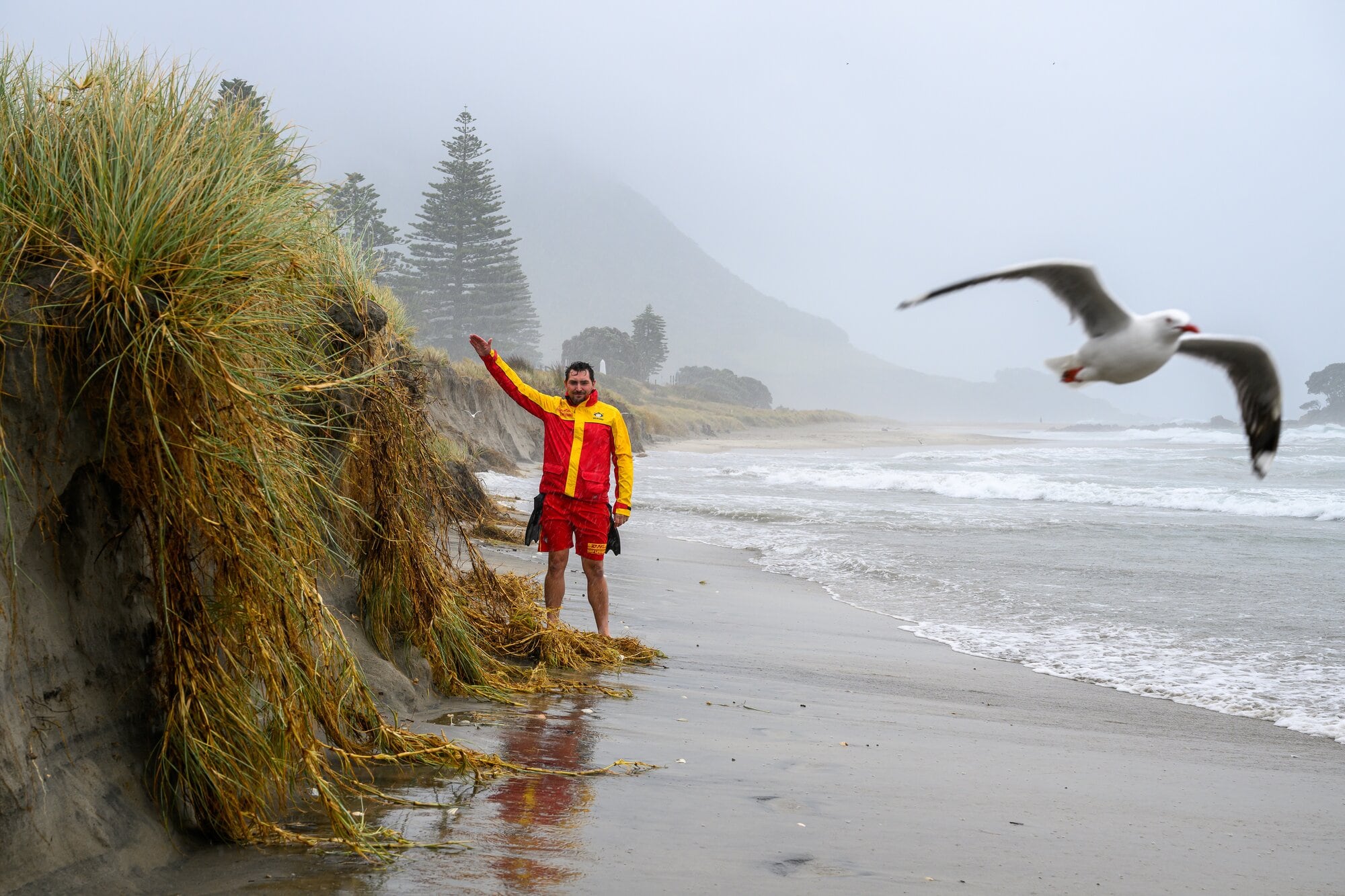Surf Life Saving New Zealand is urging beachgoers to stay alert along the Mount Maunganui to Pāpāmoa coastline, where high sand dunes, eroded beach areas and strong rips are creating dangerous conditions ahead of a week of large swells.
Eastern region manager Chaz Gibbons-Campbell said recent inspections revealed “six-foot-high dunes and big drop-offs” in some areas, particularly near Banks Ave.
“We could hardly get through in the Can-Am buggy about an hour after high tide,” he said. “At Tay St, the water was up to the toe of the dunes, so it doesn’t leave much beach for sunbathing at high tide.”
He said people also need to be cautious when walking the beach at high tide.
“With the big swells coming, people could be walking along, and then big, surging waves could easily come and catch you off-guard and you’ve got nowhere to run, because it’s a big, high dune back there.”
He said he and life saving support officer David Cooper found the dunes near Banks Ave were unstable and crumbling while they were on-site.
“People need to be careful – don’t dig into or play around those dunes,” Gibbons-Campbell said. “Each high tide is eroding more sand away. We’ve seen how dangerous collapsing sandbanks can be.”

Surf Life Saving New Zealand Eastern Region manager Chaz Gibbons-Campbell demonstrating the height of the drop-off from the sand dune to the beach near Banks Ave, Mount Maunganui. Photo / David Hall
In August, father-of-four Kane Watson died in a sand dune collapse at Muriwai Beach, west of Auckland.
Erosion is not only threatening public safety – it also affects surf lifeguard operations, Gibbons-Campbell said.
“The high dunes and tides mean we can’t use ATVs along parts of the beach at high tide. We’ll need to rely more on jetskis and IRBs [inflatable rescue boats] out in the water to do preventative actions.”
Adding to the concern, a series of rescues last weekend highlighted how hazardous the surf had become. On November 8 an experienced swimmer was swept 400 metres offshore by a rip near Coast Boulevard, Pāpāmoa, before being rescued by a member of the public and lifeguards.
On November 9, a man and a child got caught in the same rip but were fortunately pulled to safety by beachgoers before emergency crews arrived.
“The banks along the coast are messy after winter – there are deep inshore holes and strong rips,” Gibbons-Campbell said.
“Heading into or coming out of low tide is when there’s a lot more water pulling, so you’ve just got to be more wary. You could be easily standing on a little sandbank and then step off and suddenly drop into a channel up to your neck.”

Surf Life Saving New Zealand Eastern Region manager Chaz Gibbons-Campbell next to the eroded sand dunes, showing the impact on the dune plant growth near Banks Ave, Mount Maunganui. Photo / David Hall
With swells and high tides forecast to increase next week, surf lifesavers urged swimmers to stick to patrolled areas.
“Swim between the red and yellow flags, avoid walking close to the dunes at high tide, and stay alert,” Gibbons-Campbell said. “Lifeguards can’t be everywhere, so people need to know how to keep themselves and their families safe.”
Volunteer lifeguards are on duty on weekends from 11am-4pm throughout November.

